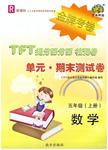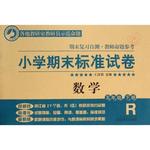题目内容
【题目】根据短文内容, 从短文后的选项中选出能填入空白处的最佳选项。选项中有两项为多余选项。
Pearls of wisdom in Proverbs
Out of sight, out of mind. An apple a day keeps the doctor away. Don’t put all your eggs in one basket.【1】. Each of the phrases mentioned above teachers a common truth. But what exactly is a proverb? It’s a short statement that contains a general truth. It is popularly known and often repeated.
Every culture has proverbs.【2】. For example, many cultures value old people for their wisdom and experience. This idea can be found in proverbs. A Chinese proverb says, “An old horse will never get lost.” And a Portuguese proverb states, “An old pan is the one that makes good food.”【3】. The English say, “Good and quickly seldom meet.” The Chinese say, “Think three times before you act.” A Russian proverb exclaims, “Take your thoughts to bed with you, for the morning is wiser.”
There is a saying: To truly know a people, learn their proverbs. Proverbs contain a culture’s values and morals.【4】. People in Saudi Arabia value books and learning. One of their proverbs says, “A book is a garden carried in the pocket.” The French say. “There is no pillow so soft as a clear conscience.” So that culture thinks that being honest is important. Egyptians know that value of friendship. One of their proverbs says, “Friendship doubles joy and halves grief.”
In Africa, many proverbs also use images familiar to Africans. For example, “The best way to cat an elephant in your path is cut him up into little pieces.”【5】Or “A roaring lion kills no game.” This means that one cannot achieve anything by sitting around and talking about it. One must get out and strive for it.
Learning proverbs in another language is fun. You can make a good impression with your language ability. But remember, proverbs are usually used in spoken language. They are rarely used in writing. If you use a lot of proverbs when you write, people will think you don’t have original thoughts
A.What is your favorite proverb? |
B.Have your heard any of these proverbs before? |
C.Many culture also agree that acting in a hurry is not a good idea. |
D.And while some are special for one culture, there are common themes. |
E. In other words, the best way to solve a problem is to work on it bit by bit.
F. There are also proverbs such as “get your ducks in a row.”
G. So you can learn what is valued in different cultures through their proverbs.
【答案】
【1】B
【2】D
【3】C
【4】G
【5】E
【解析】试题分析:
【1】由B项中these proverbs这一信息和本段空前所列举的三个例子可知,此处应选B项。
【2】第二段主要讲述了尽管文化不同,但是不同的谚语却表达着共同的主题。故D项正确。
【3】由后面所列举的三个谚语的内容可知,都讲述的是有关“acting in a hurry is not a good idea”这一主题。
【4】由本段“To truly know a people,learn their proverbs.Proverbs contain a culture’s values and morals.”这一信息可知,G 项正确。
【5】由本段所列举的两个谚语可知,E项与此有关。

 提分百分百检测卷单元期末测试卷系列答案
提分百分百检测卷单元期末测试卷系列答案 小学期末标准试卷系列答案
小学期末标准试卷系列答案【题目】根据短文内容,从短文后的选项中选出能填入空白处的最佳选项。选项中有两项为多余选项。Money MattersParents should help their children understand money. 【1】 So you may start talking about money when your child shows an interest in buying things, candy or toys, for example.1. The basic function of moneyBegin explaining the basic function of money by showing how people trade money for goods or services. It is important to show your child how money is traded for the things he wants to have. If he wants to have a toy, give him the money and let him hand the money to the cashier(收银员). 【2】 When your child grows a bit older and understands the basic function of money, you can start explaining more complex ways of using money.2. Money lessonsApproach money lessons with openness and honesty. 【3】 If you must say no to a child’s request to spend money, explain, — You have enough toy trucks for now. Or, if the request is for many different things, say, — You have to make a choice between this toy and that toy.3. 【4】 Begin at the grocery store. Pick out two similar brands of a product — a name-brand butter and a generic (无商标产品),for example. You can show your child how to make choices between different brands of a product so that you can save money. 【5】 If he chooses the cheaper brand, allow him to make another purchase with the money saved. Later, you may explain how the more expensive choice leaves less money for other purchases.
A. Wise decisions. |
B. The value of money. |
C. Permit the child to choose between them. |
D. Tell your child why he can — or cannot — have certain things. |
E. Ask yourself what things that cost money are most important to you |
F. Talk about how the money bought the thing after you leave the toy store. |
G. The best time to teach a child anything about money is when he shows an interest. |